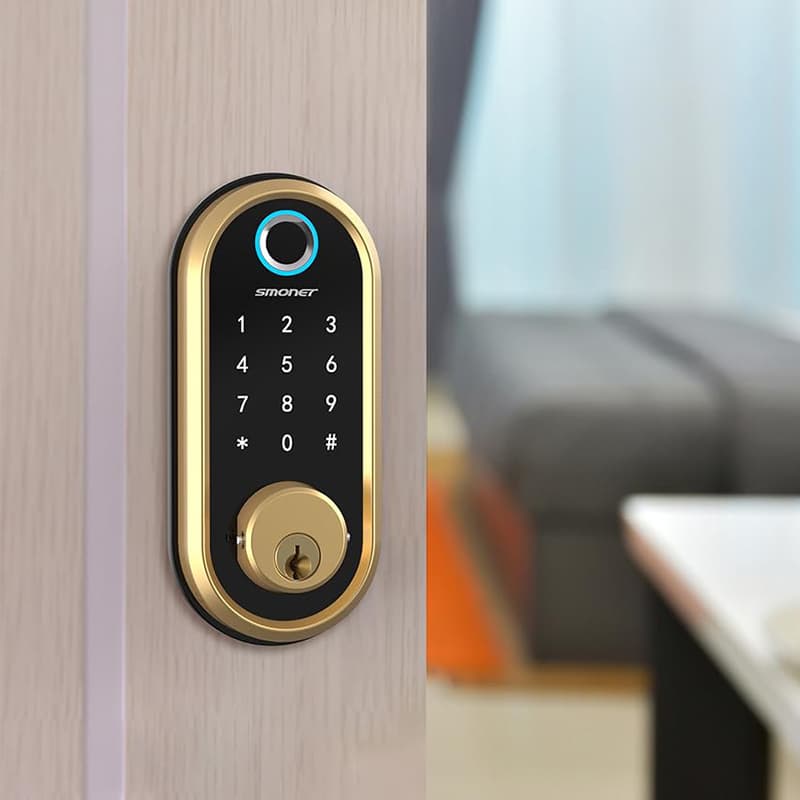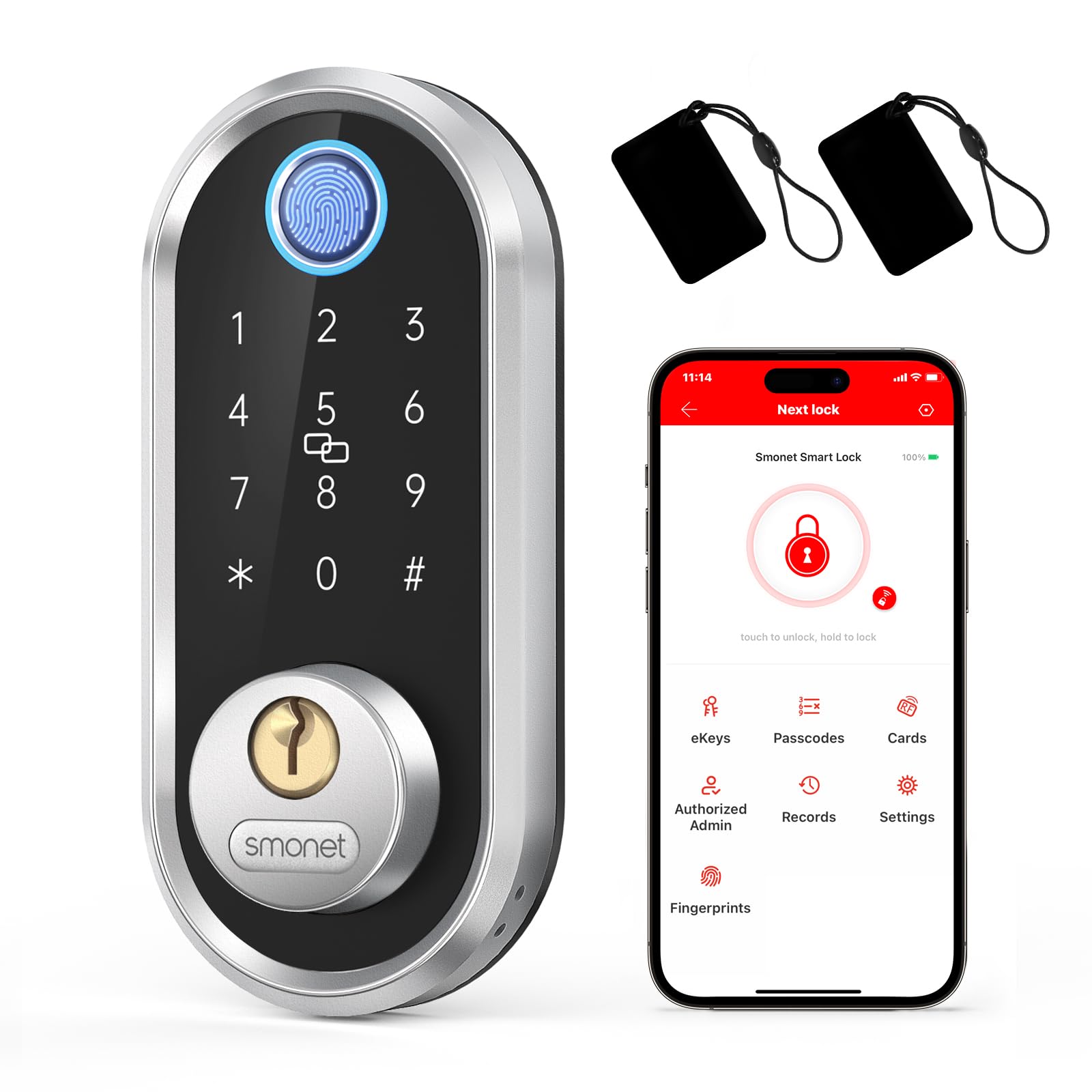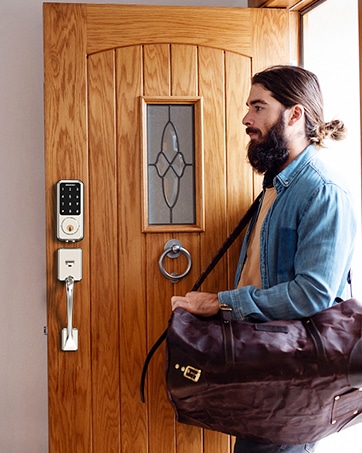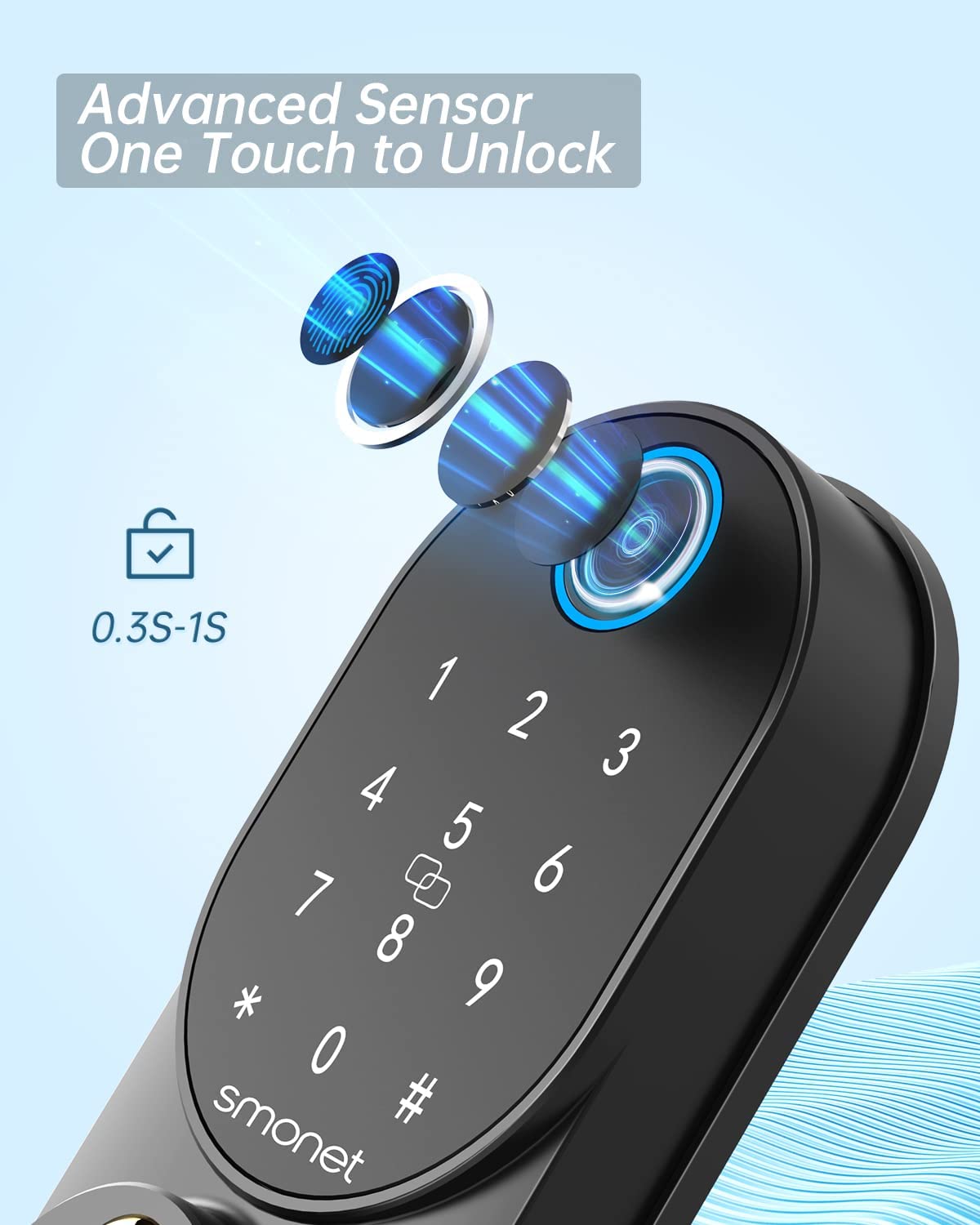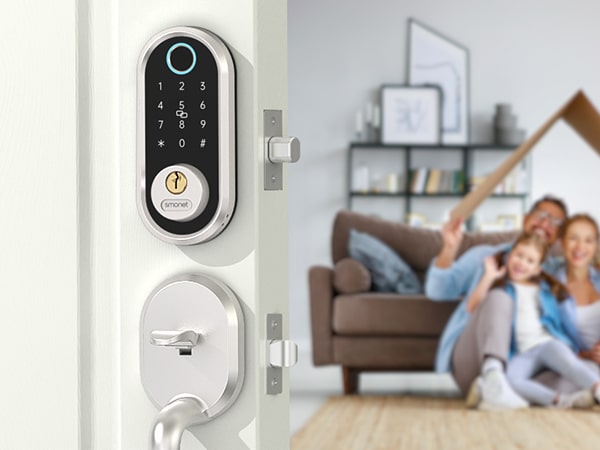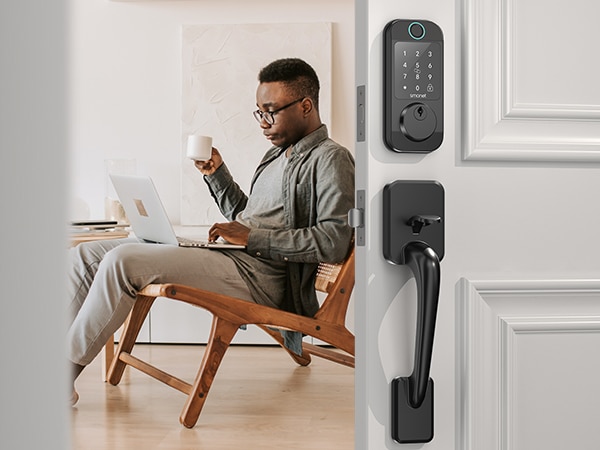Navigating Privacy Integrated with Biometric Door Lock: Pursuing the Ideal Balance
Biometric door locks have carved out an influential space in our lives, from streamlining accessibility to securing high-end premises.
Comprising an extra layer of protection, these systems surpass the security capabilities of conventional locking mechanisms.
Their major strengths lie in a significantly diminished likelihood of unauthorized entries and the eradication of key loss or theft concerns.
However, like any advanced systems, biometric locks for home present specific privacy issues. This leads one to a critical contemplation: Can we achieve an optimal balance between security and privacy?
Although the route to this conclusion might not be direct, Smonet is prepared to decipher the intricacies of biometric devices and explore how to shield your privacy while bolstering defenses. Keen to discover more?
Let’s dive into some insightful reflections in this article.
Emergence of biometric door entry: Dawn of a New Security Age
Biometric door lock system have revolutionized our approach to preserving our assets and loved ones’ safety. Unlike standard systems, these state-of-the-art devices provide a custom-fit and tamper-proof strategy to secure what’s valuable.
Employing unique biological attributes such as fingerprints, retina scans, and facial recognition, biometric locks ensure that access is restricted to authorized personnel only, whether it’s your home, office, or any other fortified area.
Additionally, these devices exhibit great versatility and user-friendly features, smoothly aligning with your pre-existing security arrangement.
Finally, smart locks dramatically reduce the issues of lost or stolen keys, forgotten passwords, or the frequent need for lock replacements.
Because of these attributes, biometric locks stand as a promising option for anyone seeking robust security coupled with ultimate convenience.
Behind the smart biometric fingerprint handle door locks: Decoding the Technology
Biometric devices operate on the premise that each individual’s unique traits are impossible to duplicate or pilfer. This core principle makes them a formidable addition to home security, considerably lowering potential security threats.
Let’s now peel back the layers on the technology propelling these advanced systems:
Biometric devices primarily employ unique traits, which can be broadly segregated into three categories:
Physiological Traits: This includes fingerprints, facial features, iris patterns, and DNA – distinct physical characteristics that remain unchangeable and cannot be stolen or replicated.
Behavioural Traits: These traits relate to specific behaviors, like voice patterns or typing rhythms. They may undergo changes over time and might not be as dependable as physiological features.
Composite Traits: Some systems amalgamate traits like voice patterns with fingerprint recognition. This combinatory approach boosts both security and user convenience.
Next, biometric door lock system for office follow several steps to either approve or reject access. Let's unravel them:
Data Capture: The first step in integrating a biometric device involves recording a unique trait. The lock captures the biometric data of permitted users and archives it in the lock’s database. This data is then converted into a mathematical algorithm representing the distinct features of the biometric characteristic.
new biometric lock
Verification: When an individual attempts to access a secured zone, they present their biometric trait, like placing a finger on a scanner. The lock system scans the presented trait and morphs it into a similar algorithm.
Comparison: The lock’s algorithm cross-references the offered biometric information with the stored data. If a match is detected, access is granted, and the door or lock is unlocked. In the absence of a match, access is refused.
At the end of the day, biometric locks rest on five pivotal pillars: uniqueness, non-transferability, user-friendliness, security, and adaptability. Working in harmony, these elements ensure strong protection while guaranteeing a user-friendly and adaptable experience.
Privacy Implications in Biometric Locks: What's at Risk.
While smart biometric fingerprint door lock spell an enhanced future for security frameworks, they also introduce noteworthy privacy dilemmas.
As previously outlined, these cutting-edge gadgets rely on collecting and processing personal data within their systems. Any violation of this extremely sensitive information can lead to dire consequences, encompassing identity theft and illicit access.
Moreover, the deployment of biometric locks transcends personal security boundaries. For instance, these systems find usage in numerous commercial and government sectors, such as banking, border control, and surveillance.
Hence, security breaches or system malfunctions could result in the violation of civil rights and the infringement of individuals’ fundamental right to privacy.
Thus, striking the correct equilibrium between security and privacy is pivotal to ensure that the merits of biometric locks do not undermine your personal information and individual freedom
Let's delve deeper into each consideration to understand how to avert legal violations:
Legal Considerations include:
Security and Liability: If a biometric lock is breached due to a security glitch, the manufacturer may face legal repercussions. Users may also be held accountable for not properly securing their biometric data. Therefore, it’s crucial to have clear contractual agreements between manufacturers and users.
Data Privacy Laws: Another legal concern is the collection, possession, and usage of biometric data. Several countries have implemented data privacy regulations like the California Consumer Privacy Act (CCPA), which mandates explicit consent for data collection, imposing severe penalties for non-compliance.
Regarding ethical considerations:
Discrimination and Bias: Biometric systems have been known to display bias, especially facial recognition technology. These biases can result in discrimination, disproportionately impacting certain racial and ethnic groups.
Cybersecurity and Hacking: Ensuring the security of biometric data is paramount. Hacked biometric data can result in identity theft, a potentially life-altering event for victims.
Navigating these legal and ethical considerations can pave the way towards a safer, more secure, and inclusive future for everyone.
Innovations in Biometric Lock Privacy
Biometric fingerprint door lock continues to evolve, allowing us to relish the benefits of robust security and ultimate convenience. Staying abreast with the latest innovations is vital to effectively tackle privacy issues.
Consequently, let’s explore how cutting-edge developments are shaping the privacy outlook in the realm of biometric locks:
Advanced Encryption Protocols: Progressive encryption protocols have become a hallmark of privacy-focused biometric locks. These protocols ensure that the biometric data stored and transmitted is highly secure and impervious to hacking attempts.
Privacy-Focused Regulations: Governments and regulatory bodies recognize the need to address privacy issues. New regulations and standards are being implemented to ensure that biometric lock technology complies with strict privacy guidelines.
Local Data Storage: Some biometric lock systems have transitioned towards local data storage, implying that the user’s biometric data is stored directly on the device itself, reducing the risk of centralized data breaches. This approach enhances user privacy by limiting the exposure of sensitive data.
Multi-Factor Authentication Integration: For enhancing protection and privacy, biometric lock systems are increasingly integrating with multi-factor authentication methods. This system combines biometrics with additional authentication factors, making unauthorized access significantly trickier.
User Consent Management: Innovative biometric systems now include user consent management features. Users have greater control over their data, granting or withdrawing consent for data usage at any given point.
Wrapping up:
We’ve observed a paradigm shift in the security and convenience scape with the evolution of biometric locks. However, despite their unmatched functionalities based on distinct biological traits, these modern devices also raise significant privacy concerns. Therefore, striking the right balance between protection and privacy is essential.
Legal and ethical considerations must be observed, ensuring user consent, data privacy, and avoiding discrimination.
The key to maintaining this balance lies in embracing cutting-edge innovations, from enhanced encryption to privacy-centric regulations.
Even though we embrace the potential of biometric locks, we must remain vigilant in safeguarding our security and personal privacy.
Prime Day OFF
Until the End
-
Master Of Cleanliness: Visual Guide To Recognizing And Understanding Your Electric Pool Cleaners
-
Making the Right Choice for A Best Keypad Door Lock: A Guide Based on Material Consideration
-
The 7 Most Common Types of Locks for Home and Office Security
-
Door Knob With Fingerprint Identification- The Future Of Home Security
-
Selecting the Ideal Digital Door Lock Style and Color for Your Abode
-
Evolution Of Security- Smart Door Key Lock
-
Mailbox Digital Lock- Reinventing Mail Security In The Digital Age
-
Exploring Alternative Unlocking Solutions - Smart Lock Fingerprint Cards and Wristbands
-
Touch Id Door Locks- Next-Generation Security At Your Fingertips
-
Smonet Home Door Lock- The Future Of Home Security


